More Great Titles
From National Trust Books
join our newsletter here
tap on the titles below to read more



 www.anovabooks.com
www.anovabooks.com

The world of tea offers consumers as much variety and chouce as wine or whisky. The production of this wonderfully healthy beverage has evolved over centuries and the art of tea manufacture in more than 40 countries today brings a wealth of flavours and aromas to suit all occasions and all times of day. From the gentle, subtle character of white to the robust, satisfying, mouth-filling strength of a black or puerh tea, there is a tea to seduce and tantalise every palate.
A refreshingly new way to understand and classify tea for all tea lovers. Tea Classified has details on more than 100 teas from the worlds most famous tea-producing regions such as China, Japan, India, Sri Lanka, Africa, Indonesia and Taiwan, and from less well-known tea countries, including Korea, Thailand, Vietnam, North America and England. Every entry has an illuminating description of each teas character - its taste and appearance - plus essential brewing tips.
Richly illustrated, it covers tea culture from Asian tea ceremonies to the latest tea renaissance in Europe and America. With so many different teas now easily sourced, this book guides you to the best Darjeelings, the tastiest green teas, the perfumed fragrance of flavoured teas and the captivating floral displays of treasure teas.
Jane Pettigrew is one of the worlds leading tea experts. She speaks at conferences around the world, teaches Tea masterclasses, acts as consultant to hotels and tea rooms and appears regularly on television and radio. She has written 13 books on tea including The Social History of Tea, Afternoon Tea, Design for Tea and Traditional Teatime Recipes.
Bruce Richardson is a tea blender and writer who has been active in Americas tea renaissance for nearly 20 years. He is a familiar speaker at tea events, a magazine writer and author of numerous books on tea, including The Great Tea Roomsof Britain and The Great Tea Rooms of America.
First published in the United Kingdom in 2008 by
National Trust Books
10 Southcombe Street
London W14 0RA
An imprint of Anova Books Company Ltd
Copyright National Trust Books
Text copyright Jane Pettigrew and Bruce Richardson
Originally published in the United Kingdom under the title The Tealovers Companion in 2005 by The National Trust (Enterprises) Ltd.
Published in the United States as The New Tea Companion in 2005 by Benjamin Press
All rights reserved. No part of this publication may be reproduced, stored in a retrieval system, or transmitted in any form or by any means, electronic, mechanical, photocopying, recording or otherwise, without the prior written permission of the copyright owner.
First eBook publication 2014
ISBN 9781909881167
aAlso available in hardback
ISBN 9781905400645
This book can be ordered direct from the publisher at
www.anovabooks.com, or try your local bookshop.
Also available at National Trust shops.
Picture Acknowledgements
Jane and Bruce would like to say a very sincere thank you to the following friends who have kindly allowed them the use of their photographs:
Tim dOffay, UK pages .
Thanks also to the following: Mary Evans Picture Library page 8; National Trust Picture Library pages 13
( NTPL, by kind permission of the Bedingfeld family), 14
( NTPL/Bill Batten), 15 ( NTPL/Andreas von Einsiedel), ( NTPL/Derrick E. Witty).
history of tea

Teas origins in China
A nyone who has any interest at all in tea, no matter how new or how small, cannot fail to recognize the fascinating links between modern tea-drinking and Ancient China. The story weaves its way so far back through Chinese history (2737BC is the date always mentioned as the starting point) that it is impossible to know the true facts, and so stories and legends have grown up to explain the discovery, early cultivation and consumption of this wonderful life-enhancing beverage. Teas journey through the ages and across every continent has inevitably meant the gradual development of new production methods, new rituals and new, inventive pieces of equipage, but we cannot deny its colourful and intriguing origins.
The accepted myths and legends tell us that it was Shen Nung, emperor, scholar and herbalist, who first recognized teas healthful properties and refreshingly delicious taste when a few stray leaves drifted down from an overhanging tree one day and fell by chance into the cauldron of water that he was boiling. Other stories of teas discovery have been told over the centuries, but all praise teas ability to alleviate drowsiness and assist concentration, to restore energy, combat depression and revive the spirit. Recognized from the earliest days as a tonic herb, tea was taken internally by the Chinese as a digestive aid and applied topically in ointments to alleviate skin troubles and rheumatism.
During the rule of the Han Dynasty (AD 206220), tea became more and more popular and today antique lacquer tea trays and tables, decorated lacquer cups and early porcelain tea bowls from the period bear witness to the drinks widespread use. It is thought that until this time wild tea trees had been felled so that the leaves might be stripped off for brewing and, as demand for the raw material grew, plantations were established for commercial cultivation. This, and improved methods of manufacture, helped to guarantee a regular, good-quality crop and allow the growth of a thriving trade throughout China which earned fortunes for the traders.
By the end of the third century AD, tea had become Chinas national drink and in AD332 the first record of tea manufacture was written by Zhang Yi, giving details of how plants were laid out, pruned and plucked, and how the leaves were processed. During the fourth and fifth centuries, many new plantations were established along the Yangtze River Valley, and tea was now consumed not simply as a tonic brew but as a pleasurable drink. During the Tang Dynasty (AD618906), a strict code of tea etiquette evolved and a new professional class of Tea Masters acquired an important role in society as employees of the emperor and wealthy mandarins. During the reign of the Song Dynasty (AD9601279), the Chinese Tea-house became the focus of Chinese social life and a venue for merchants and dealers, friends and families, to gather and talk business, chat, relax, play cards or chess, and enjoy the professional storytellers, poets, jugglers and actors who entertained there.

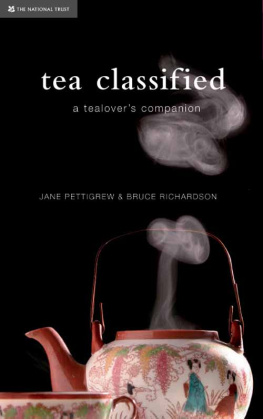


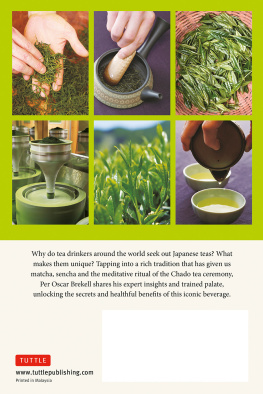
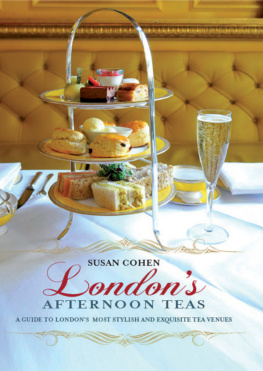



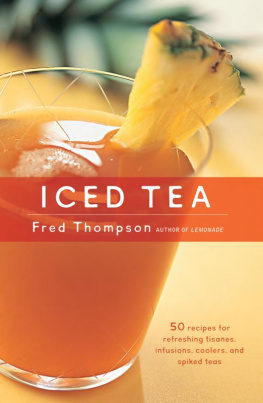
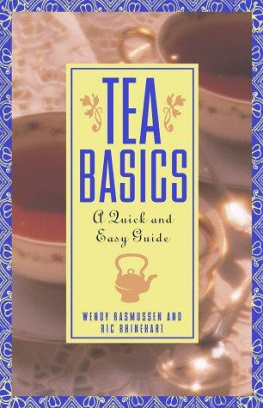




 www.anovabooks.com
www.anovabooks.com
